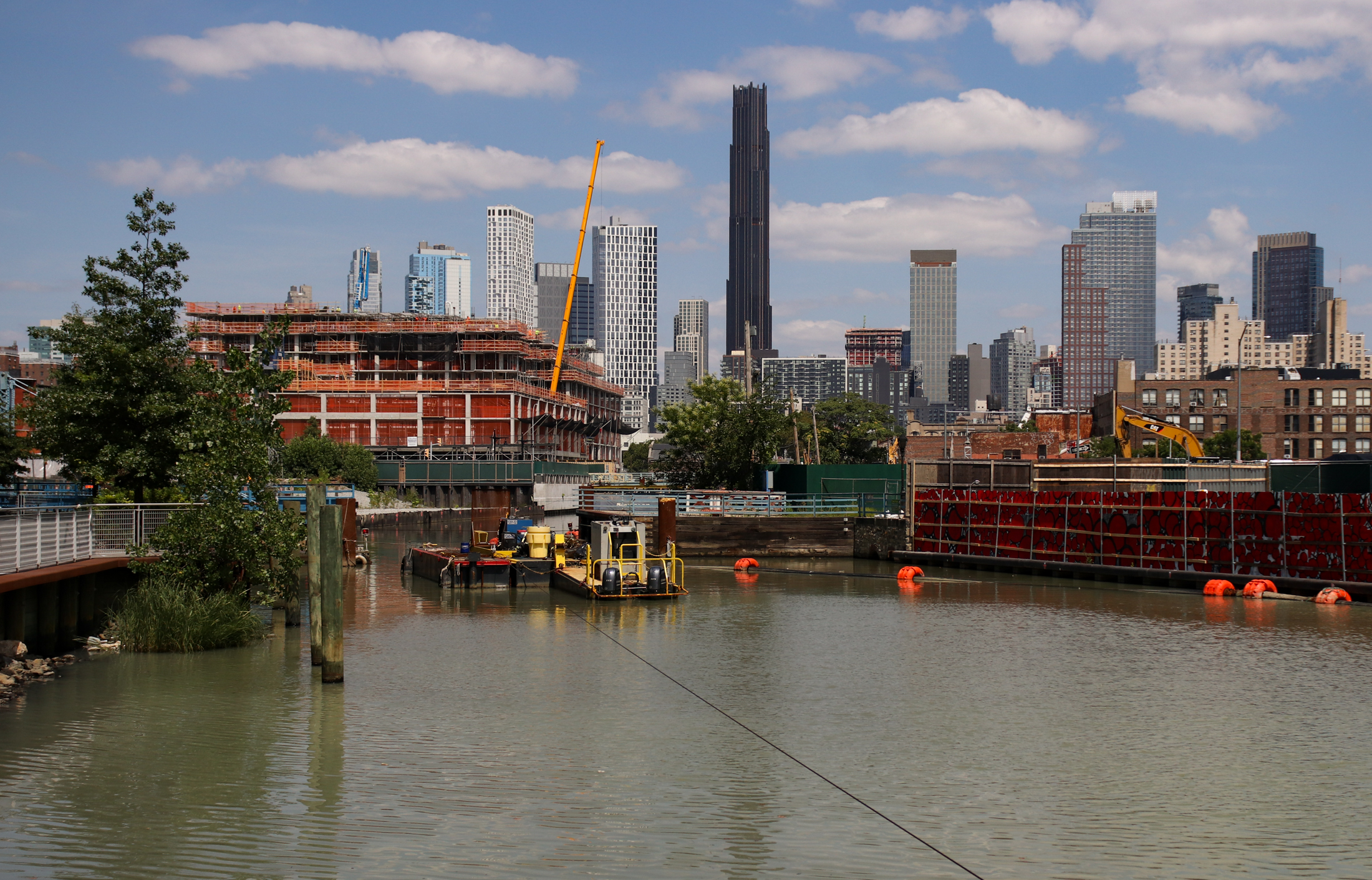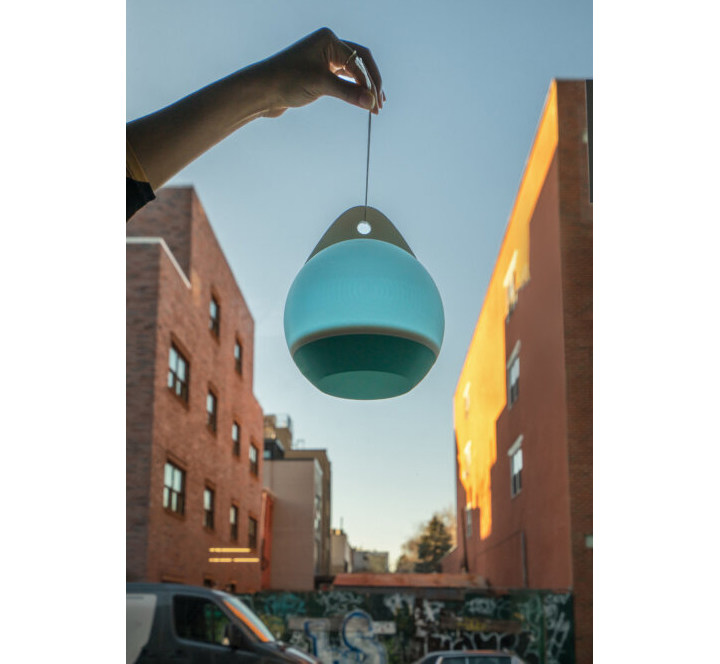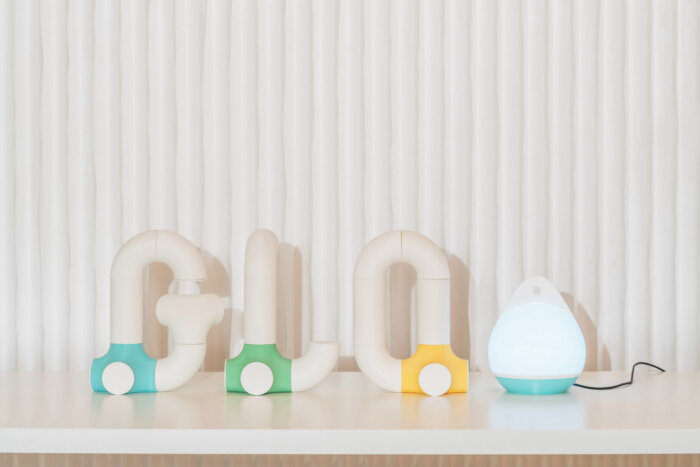Lanterns Mix Tech and Design to Alert Gowanus Locals to Flood Warnings
A group of scientists and designers have come up with a glowing device to warn residents when too much rain and contaminated water from households are likely to mix in the Gowanus Canal.

The GLOwanus Lantern, a new piece of tech developed by the Van Alen Institute, will inform residents of flood alerts. Photo via Cameron Blaylock/The Van Alen Institute
By Ximena Del Cerro, Brooklyn Paper
Gowanus is glowing, as a group of scientists and designers have come up with a device to warn residents of waterbody advisory alerts when too much rain and contaminated water from households mix in the Gowanus Canal. The lanterns allow neighbors to reduce their own impact by cutting down on their water usage during rainy days.
The GLOwanus Lantern will light up with vivid colors when the city issues a warning — alerting residents to wait to wash dishes, do laundry, flush toilets or take a shower, which in turn reduces the amount of water in the neighborhood’s sewers.

Gowanus is particularly prone to flooding, due in part to the geography of the neighborhood, which used to be a tidal marsh, and the presence of the Gowanus Canal, a federal Superfund site.
Last fall, when six inches of rain inundated parts of Brooklyn, flooding streets, homes, and subway stations, Gowanus saw some of the worst of it.
To add some complications to the circumstances, Gowanus has a combined sewer system — meaning wastewater from homes’ drainage is collected in the same pipes as rainwater flowing off the street. When about a quarter inch of rain has fallen, the sewers often overflow — and dump combined sewer overflow (CSO) in the Gowanus Canal.
“Most of the time, that’s not an issue,” said Steven Koller, one of the designers of the GLOwanus Lantern. “But when you have a rain event, and it doesn’t need to be a big one, the system gets overloaded.”

Photo via Cameron Blaylock/The Van Alen Institute
Koller, who is working toward his PhD in Environmental Science and Policy PhD at the University of Miami, is also currently working as a fellow at the Van Alen Institute. He and Francesca Bastianini, another Van Alen fellow and the founder of Sighte Studio, worked together to create the lantern.
During wet days, the city’s sewer system can’t pump everything in the pipes to the wastewater treatment plants across the city. Instead, it releases it to 700 outfall points across all five boroughs, including the Gowanus Canal at Butler Street.
“The city doesn’t have plans in place to bring the CSO to zero, only to mitigate it,” said Andrew Brown, director of programs at Van Alen. “So residents’ behaviors are crucial. Individuals and business owners are empowered to take action in their hands.”
The GLOwanus lantern is designed to produce a dim glow while there is no CSO risk. When the city issues waterbody advisories, it will circuit through rainbow colors advising its hosts to cut back on their water usage so that, even if flooding occurs, it can be made up of mostly rainwater.
The recent rezoning of Gowanus is expected to bring approximately 20,000 new residents to the neighborhood — which many current residents worry will increase CSO and flooding.
“New movers need to know,” said Brown.”If you keep using water the way you usually would, you contribute to the CSO.”

To perfect the lantern, Van Alen brought together community members interested in the issue to weigh in on how the final product would look. The lantern is 3-D printed using recycled materials. Once it was ready, a dozen were distributed for those who had participated. The organization now has around 35 of them to hand out for free.
“The design makes it feel like a nightlight, kinda. Design can take intimidating issues, and gross ones, and make them easy to understand,” Brown said. “You can meet a lot of skepticism when people wonder what the value of this is and think that other people are already working on this, but a cool design helps keep people willing to engage.”
The Van Alen Institute also displays educational material on CSO in the front window of its headquarters at 303 Bond St. Brown said PhD students and eco-tourism groups have stopped by the display to discuss the situation and the proposed solution.
Even a local middle school from around the corner took a field trip to the office to talk to the team about the project, and now they host a lantern in their classroom. The Van Alen Institute plans to release code and 3-D printing instructions to the public soon, so they can make their own lanterns at home.
With the ongoing Superfund cleanup — plus state and city cleanups — the city and Gowanus residents are hoping to see the polluted canal eventually turned into a recreational space.
“I think it’s important for Gowanus people to understand that ambition is real,” said Brown. “Residents should look at what officials are planning and be mindful that engagement is key.”
Editor’s note: A version of this story originally ran in Brooklyn Paper. Click here to see the original story.
Related Stories
- Former Green Building Razed, Site Ready for Work on New 20-Story Apartment Building
- EPA Boss Retires After 13 Years Overseeing Gowanus Canal Cleanup, Met ‘Crucial Milestones’
- Work on Long Delayed Gowanus Canal Sewage Overflow Tanks to Finally Start
Email tips@brownstoner.com with further comments, questions or tips. Follow Brownstoner on Twitter and Instagram, and like us on Facebook.








What's Your Take? Leave a Comment